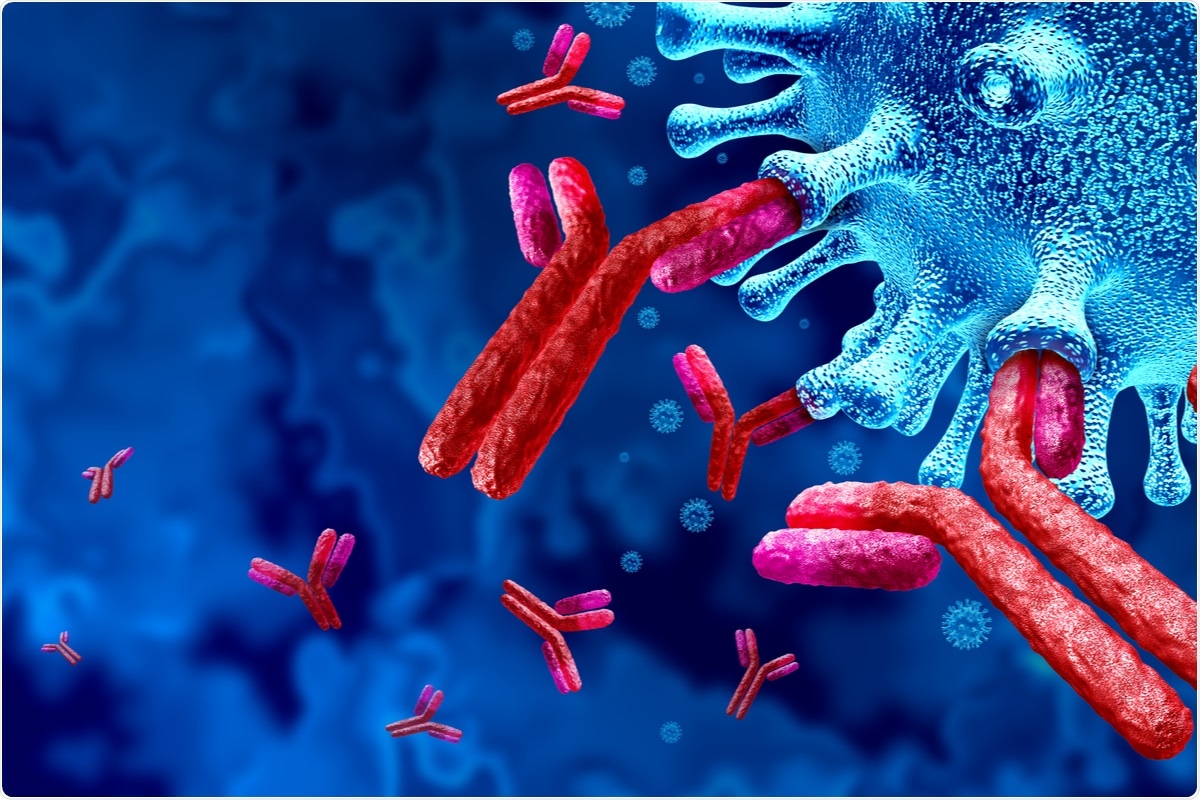When the coronavirus disease 2019 (COVID-19) pandemic first emerged, the only tests available were PCR tests – not originally designed to detect the disease. This procedure was rapidly optimized and homogenized to allow for repeatable results. Lateral flow devices became available shortly after, but for a long time, these were only capable of detecting past infection in individuals. Now, a battery of tests exists for the disease and are highly advertised and commercialized, but a new problem has arisen for test manufacturers – vaccines.
 Study: Anti-membrane and anti-spike antibodies are long-lasting and together discriminate between past COVID-19 infection and vaccination. Image Credit: Lightspring/ Shutterstock
Study: Anti-membrane and anti-spike antibodies are long-lasting and together discriminate between past COVID-19 infection and vaccination. Image Credit: Lightspring/ Shutterstock
Severe acute respiratory syndrome coronavirus 2 (SARS-CoV-2) consists of four structural and sixteen non-structural proteins. The four structural proteins are the spike protein, membrane protein, nucleocapsid protein, and envelope protein. Most vaccines, and most tests for the disease produced near the start of the pandemic, focused on the spike protein. This consists of two subunits – the S1 subunit, which contains a receptor-binding domain (RBD) that can bind to angiotensin-converting enzyme 2 (ACE2) to permit viral cell entry, and the S2 subunit, which is responsible for membrane fusion. These require a host enzyme to cleave them before achieving functionality.
However, as most vaccines now target the spike protein, the early tests that look for the presence of anti-spike antibodies can no longer determine the difference between an individual that was at some point infected with COVID-19 and a vaccinated individual. Researchers from the University of Wisconsin-Madison have been investigating which other proteins remain prevalent long enough for tests against them to be worthwhile.
A preprint version of the study is available on the medRxiv* server while the article undergoes peer review.
The study
The researchers quantified antibody levels against the RBD using a commercially available chemiluminescent assay. Anti-nucleocapsid and anti-membrane antibodies were detected using ELISA. Sera was gathered from non-vaccinated naïve subjects and previously convalescent subjects five weeks post-symptom and vaccinated otherwise naïve subjects. Sera was gathered from those infected five weeks, three months, six months, and 12 months post-symptom resolution.
The researchers found that both previously convalescent and vaccinated individuals showed significantly higher anti-RBD Ig than non-vaccinated individuals – but that there was little difference between those who had been infected and those who had been vaccinated. The researchers could not tell how these antibodies persisted in vaccinated subjects compared to infected subjects as the vast majority of the participants had become vaccinated by the end of the study.
The ELISA assay used to determine IgG against the nucleocapsid peptide was slightly less accurate than the assay used for anti-RBD antibodies but still showed a sensitivity of 91% and a specificity of 88%. There was no discernible difference between vaccinated and naïve subjects, and anti-nucleocapsid proteins were significantly higher in previously infected subjects shortly following infection. However, anti-nucleocapsid IgG levels degraded quickly, with 34% of individuals seronegative for anti-nucleocapsid IgG at six months and 48% at 12 months.
The ELISA against the membrane peptide was slightly better than the one against the nucleocapsid protein but still not as accurate as the commercially available assay. Once again, there was no difference in anti-membrane IgG levels between naïve and vaccinated subjects, while infected subjects showed significantly higher anti-membrane IgG levels. Unlike the anti-nucleocapsid antibodies, however, these antibodies showed significantly higher retention. Levels remained stable in infected individuals up to 12 months.
Conclusion
This study confirms several other previous investigations: anti-RBD antibodies remain prevalent and detectable for significant periods. However, the study also proves that anti-membrane IgGs remain present in infected individuals for up to 12 months and at levels that suggest even longer. These are only present in individuals who have been infected but not vaccinated, allowing tests based around these antibodies to discriminate between the two – unlike most commercially available tests, which focus on the spike protein.
The anti-membrane IgG was even present in those vaccinated but suffered breakthrough infections, preventing studies based on these tests from having to exclude these individuals. This information could prove very valuable to those looking to create tests such as lateral flow devices to provide data on the number of individuals within an area that had been infected. This could prove valuable to public health policymakers and epidemiologists, as it could allow them to investigate the spread of the pandemic and those most at risk within particular areas.
*Important notice
medRxiv publishes preliminary scientific reports that are not peer-reviewed and, therefore, should not be regarded as conclusive, guide clinical practice/health-related behavior, or treated as established information
"lasting" - Google News
November 11, 2021 at 11:12PM
https://ift.tt/3kvC7jV
Long-lasting anti-spike and anti-membrane antibodies can differentiate between COVID-19 infection and vaccination - News-Medical.Net
"lasting" - Google News
https://ift.tt/2tpNDpA
Shoes Man Tutorial
Pos News Update
Meme Update
Korean Entertainment News
Japan News Update
Bagikan Berita Ini














0 Response to "Long-lasting anti-spike and anti-membrane antibodies can differentiate between COVID-19 infection and vaccination - News-Medical.Net"
Post a Comment